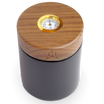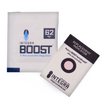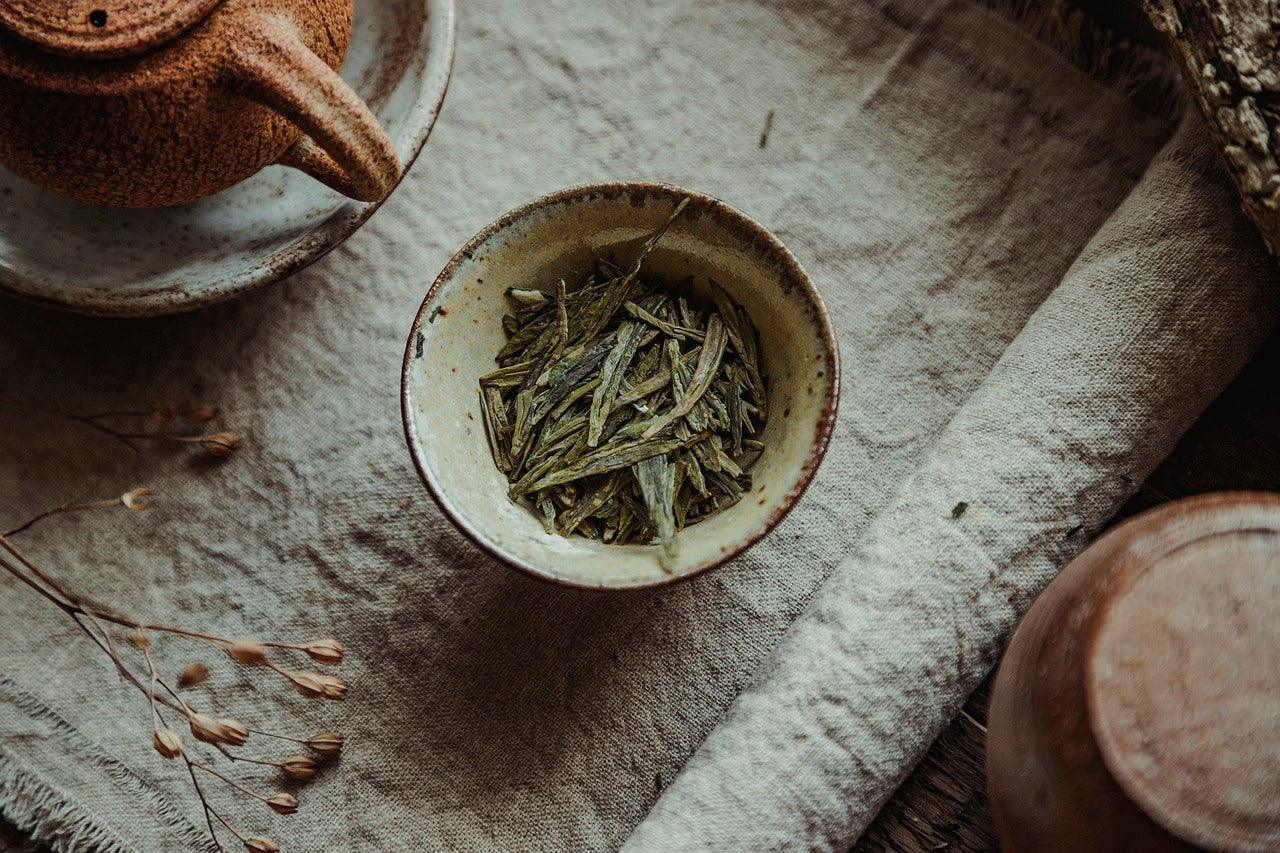Table of Contents
- Introduction
- What Is Ginseng?
- Traditional and Modern Uses
- Why Vaporize Ginseng?
- Key Compounds in Ginseng Vapor
- Ideal Temperature for Vaporizing Ginseng
- How to Prepare Ginseng for Vaporization
- What to Expect: Effects and Onset
- Best Time to Vaporize Ginseng
- Safety and Contraindications
- Medication and Herb Interactions
- Best Practices for Vaporizing Ginseng
- Combining Ginseng with Other Herbs
- Flavor and Aroma of Ginseng Vapor
- Draw Technique for Maximum Effect
- Conclusion
- About the Author
Introduction
Ginseng is one of the most legendary medicinal plants in the world. Used for thousands of years in Traditional Chinese Medicine and Korean herbal systems, this adaptogenic root is valued for promoting stamina, mental clarity, stress resilience, and immune strength. But while most people are familiar with ginseng as a tea, tincture, or supplement, far fewer know that it can also be vaporized.
Vaporizing ginseng opens up a new route of administration—bypassing digestion and allowing certain active compounds to reach the bloodstream faster. With the right technique and temperature control, you can experience ginseng’s balancing and energizing qualities in a more direct and immediate way. But not all ginseng is the same, and vaporization requires a more nuanced approach than simply brewing a root tea.
This in-depth guide explores how to vaporize ginseng properly, what to expect in terms of effects, and how to incorporate it safely into your wellness routine. Whether you’re curious about herbal nootropics, looking for a stimulant-free energy boost, or simply want to expand your plant knowledge, this article will help you make the most of this revered botanical.
What Is Ginseng?
The term “ginseng” typically refers to plants in the Panax genus, though several related species are also used medicinally. The most common types include:
- Panax ginseng: Also called Korean or Asian ginseng, this is the classic red or white root used for energy and immune support.
- Panax quinquefolius: American ginseng, known for being more cooling and calming compared to its Asian counterpart.
- Eleutherococcus senticosus: Often marketed as “Siberian ginseng,” though botanically distinct. It has similar adaptogenic properties but lacks ginsenosides.
For vaporization, Panax ginseng and Panax quinquefolius are preferred due to their higher content of vapor-active saponins and aromatic terpenes. The dried root is typically sliced or powdered before use.
Traditional and Modern Uses
Ginseng has a rich history as a vitality tonic in Asian herbalism. In Traditional Chinese Medicine, it’s considered a “Qi tonic” that strengthens life force, builds blood, and supports recovery from fatigue, illness, or aging. American ginseng, by contrast, is used to calm the spirit, clear heat, and nourish yin—making it a preferred choice for those who tend toward overstimulation or heat conditions.
Modern science has validated many of ginseng’s traditional claims, with studies indicating that it may:
- Improve mental performance, memory, and focus
- Enhance endurance and physical stamina
- Support immune modulation and resilience to stress
- Promote metabolic regulation and blood sugar balance
While most of these effects have been studied using oral extracts or decoctions, vaporization presents an opportunity to explore faster, cleaner delivery of key compounds—especially for cognitive support and energy.
Why Vaporize Ginseng?
While ginseng is most commonly consumed as a tea, capsule, or extract, vaporizing the dried root introduces a faster and more direct way to experience its effects—especially those linked to cognitive function, mood, and energy. The lungs allow for near-immediate absorption into the bloodstream, bypassing the gastrointestinal tract and liver metabolism. This results in a quicker onset and, for some users, a clearer and more noticeable effect compared to oral forms.
Benefits of vaporizing ginseng:
- Faster absorption: Onset within 1–5 minutes via the lungs
- Targeted mental benefits: Improved focus, alertness, and stress resistance
- Minimal systemic load: Lower strain on digestion and metabolism
- Cleaner delivery: No added fillers, sugars, or alcohol
Unlike caffeine, vaporized ginseng does not produce nervousness or a physical “rush.” Instead, users report a smooth lift in mental clarity, subtle motivation, and improved resistance to stress—making it suitable for study, work, or mid-afternoon fatigue without the crash of stimulants.
Key Compounds in Ginseng Vapor
Ginseng contains hundreds of bioactive compounds, but only a handful are relevant to vaporization due to their molecular size, volatility, and thermal stability. The most important for vapor use include:
- Ginsenosides: These triterpene saponins are ginseng’s signature adaptogens. Some are heat-stable and may be released at vaporization temperatures, particularly Rg1 and Rb1, which are linked to cognitive performance and anti-fatigue effects.
- Panaxynol: A polyacetylene compound with antioxidant and neuroprotective properties. Vapor-active at moderate temperatures.
- Volatile oils: Including sesquiterpenes like β-elemene and α-humulene, which contribute to the plant’s aroma and may provide mood-lifting and anti-inflammatory effects.
While full extraction of all ginsenosides may require higher temperatures or decoction, vaporizing still allows partial release of some lighter and aromatic actives—especially when combined with proper grinding and temperature control.
Ideal Temperature for Vaporizing Ginseng
Due to its combination of heavier saponins and volatile terpenes, ginseng requires moderately high temperatures to vaporize effectively—but not so high as to cause combustion or degradation.
| Temperature Range (°C) | Expected Effects |
|---|---|
| 160–170 | Mild focus lift, subtle aroma, lower ginsenoside release |
| 170–185 | Optimal for cognitive stimulation and balanced energy |
| 185–195 | Maximum extractable effect, bolder flavor, but risk of bitterness |
Start around 170 °C and gradually increase in 5-degree steps if desired. Watch for signs of overheating such as sharp throat sensation or loss of flavor. A well-dried, coarse grind performs best at the mid to upper temperature range.
How to Prepare Ginseng for Vaporization
Proper preparation ensures you extract the most benefits from your ginseng while preserving flavor and protecting your device.
Recommended steps:
- Use dried ginseng root only – Avoid extracts or tinctures in vaporizers
- Grind coarsely – A medium-coarse texture ensures airflow without clogging
- Dry thoroughly – Moisture impairs vapor production and can create harshness
- Load lightly – Allow for air circulation; don’t overpack the chamber
Use a stainless-steel grinder and avoid plastic parts that might accumulate resin or affect flavor. Store your ginseng in a glass jar away from sunlight and moisture to preserve potency.
What to Expect: Effects and Onset
Vaporized ginseng typically produces a different effect profile than when consumed as a tea or capsule. While oral forms provide slower, longer-lasting support, vaporization offers a more immediate shift in mental clarity, stress resilience, and energy tone. The effects are generally subtle but noticeable—especially when used mindfully and at the correct temperature.
Users commonly report:
- Improved focus and mental alertness without jitteriness
- Mild uplift in mood and confidence
- Enhanced cognitive endurance during study or work
- Reduced mental fatigue or “brain fog”
The effects typically begin within 1 to 5 minutes and last around 45 to 90 minutes depending on the dose and individual sensitivity. Because ginseng is an adaptogen, regular use may also promote cumulative improvements in stress response and overall balance.
Best Time to Vaporize Ginseng
Choosing the right time to use ginseng can make the difference between a productive lift and unwanted overstimulation. While less intense than caffeine, ginseng still has an activating nature and is best reserved for daylight hours and situations where mental sharpness or stamina is needed.
Ideal times for use:
- Morning: To start the day with focus and balanced energy
- Midday: As a brain refresher or fatigue-fighter without a crash
- Before study, work, or meetings: Supports mental engagement and alert presence
We do not recommend vaporizing ginseng in the evening or before sleep, especially for sensitive users. Even small doses may increase alertness and make it harder to wind down.
Safety and Contraindications
Ginseng is considered safe for short-term and moderate use in healthy adults. However, its effects on the endocrine and nervous systems mean some individuals should proceed with caution. The vaporization method delivers active compounds rapidly, so it's especially important to begin slowly and monitor your response.
Avoid or consult a doctor if you:
- Have high blood pressure or a history of heart arrhythmias
- Are pregnant or breastfeeding
- Take blood-thinning medications or SSRIs
- Experience anxiety or overstimulation from energizing herbs
As with all vaporized herbs, never inhale ginseng extracts, oils, or raw powders. Only use dried root slices or shredded root from a trusted source. If you’re unsure about interactions, it’s best to consult your herbalist or healthcare provider before starting regular use.
Medication and Herb Interactions
Although rare, ginseng may interact with certain medications due to its mild stimulating and hormone-modulating effects. These interactions may be amplified when ginseng is vaporized, as onset is faster and bypasses digestive metabolism.
Interactions to be aware of:
- Antidepressants (SSRIs): Ginseng may increase serotonin activity in sensitive individuals
- Blood thinners (e.g., warfarin): Ginsenosides can affect platelet aggregation
- Immunosuppressants: Ginseng may counteract immune-dampening effects
To stay on the safe side, avoid combining ginseng vapor with strong stimulants (like caffeine or guarana) in the same session. For a more balanced blend, ginseng can be paired with calming or adaptogenic herbs such as lemon balm or holy basil—covered further in the next section.
Best Practices for Vaporizing Ginseng
To get the most from vaporized ginseng, consistency and technique matter. This isn’t a plant you inhale casually or heavily—its effects are best experienced with a light hand and patient rhythm.
Tips for optimal experience:
- Start low: Begin with 0.05–0.1 g and adjust as needed
- Use mid-range temperatures: 170–185 °C yields the best results
- Inhale slowly: Draws of 5–7 seconds are ideal for comfort and effect
- Pause between draws: Give 30–60 seconds between hits to gauge response
Because ginseng is dense and slightly resinous, it can produce dry vapor. Keep a glass of water nearby and clean your device regularly to avoid buildup. Devices with airflow control and full convection are especially well suited to ginseng's texture and chemistry.
Combining Ginseng with Other Herbs
Ginseng can be used alone for clarity and endurance, but combining it with other herbs can expand or soften its effects—especially if you want to reduce stimulation or create a more complex profile.
Recommended pairings:
- Lemon Balm + Ginseng: Enhances focus while smoothing energy—ideal for stress-prone individuals
- Holy Basil (Tulsi) + Ginseng: Adaptogenic synergy that supports mood, memory, and stress resilience
- Rosemary + Ginseng: Brightens mental fatigue and supports blood flow to the brain
Each of these herbs has a different optimal temperature range, so you may need to experiment with a tiered approach—starting at lower heat and gradually increasing to capture each plant’s compounds.
Flavor and Aroma of Ginseng Vapor
Ginseng has a very distinct profile—slightly earthy, sweet, and bitter with a touch of spice. When vaporized, these qualities become more pronounced. If you've ever tasted raw ginseng or high-quality extract, you'll recognize its signature flavor immediately.
What to expect:
- Aroma: Warming, earthy, and slightly sharp
- Taste: Bitter-sweet, sometimes resembling licorice or tree bark
- Aftertaste: Lingering and dry, especially at higher temperatures
The first few draws are usually the most flavorful. As the session continues, the vapor becomes lighter and more neutral. If the taste becomes harsh, it's a sign the herb is depleted or the temperature is too high.
Draw Technique for Maximum Effect
Because ginseng’s effects are cumulative and subtle, rushing through a session reduces its value. Treat the inhalation more like breathwork—slow and focused. This helps preserve terpenes, avoid throat irritation, and create a more grounded experience.
Suggested technique:
- Preheat your vaporizer to 175 °C
- Take a 5–7 second slow inhale through the mouthpiece
- Hold for 1–2 seconds (optional), then exhale gently
- Repeat after a 30–60 second pause
Most users find that 3–6 inhalations over 10 minutes is enough for a full session. If desired, you can stir the bowl and finish with 1–2 higher-temp draws to release any remaining actives.
Conclusion
Vaporizing ginseng offers a fast, clean, and modern way to tap into one of the world’s most time-tested herbs for focus, resilience, and clarity. While it doesn’t deliver the sharp kick of caffeine or synthetic stimulants, it provides a smoother, steadier kind of energy—ideal for those who want to feel empowered without being overstimulated.
Whether you choose Korean red ginseng for activation or American ginseng for calm clarity, vaporization adds a flexible new tool to your herbal practice. With mindful dosing, proper preparation, and respect for its unique chemistry, ginseng becomes more than a supplement—it becomes a functional ally for your breath, brain, and balance.
Looking for a precise, analog vaporizer that respects the complexity of herbal roots? Try the Vapman for total manual control, or explore the Lotus for convection-based heating that excels with dense botanicals like ginseng.
About the Author

Michael, Founder & CEO of INHALE Vaporizers
Driven by a passion for clean, mindful vaporization, Michael leads INHALE in crafting elegant and sustainable tools like the Vapman and Lotus. With a deep focus on function, safe botanical exploration, and user empowerment, INHALE helps people reconnect with the power of plants—one breath at a time.
📩 support@nowinhale.com | Contact us

















Leave a comment
All comments are moderated before being published.
This site is protected by hCaptcha and the hCaptcha Privacy Policy and Terms of Service apply.